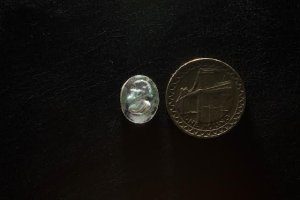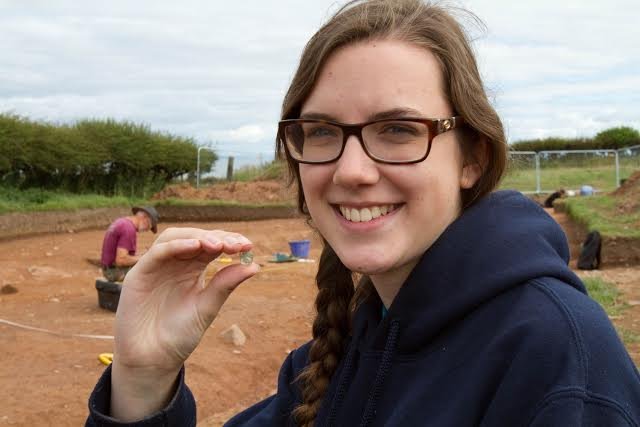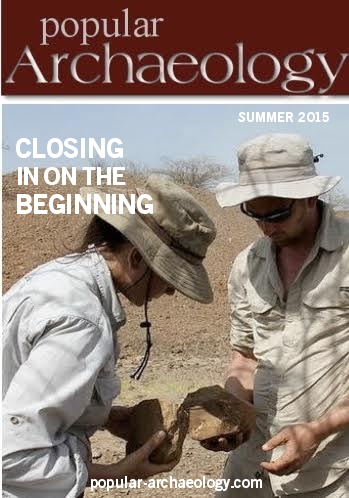
Archaeologists and a team of student and volunteer excavators continue to unearth clues to Roman life at the ancient Roman frontier fort and settlement of Maryport in the U.K.
The Roman fort and nearby civilian settlement at Maryport, under excavation since 2011 by the Roman Temples Project team, were a significant element of the coastal defenses forming the northwestern boundary of the Roman Empire for more than 300 years. They are part of the Frontiers of the Roman Empire World Heritage Site which also includes Hadrian’s Wall, the Antonine Wall in Scotland and the German frontier.
This year’s dig has yielded more information about the layout of the temples area near the remains of the Roman fort and civilian settlement in fields next to the Senhouse Roman Museum. The team has also found a rare piece of Roman jewelry.
Professor Ian Haynes, project director said: “This year we have been able to demonstrate that the temples formed part of a large monument complex, unlike anything discovered on Britain’s Roman frontier to date. The complex was a major undertaking and was dominated by a substantial precinct where many of Maryport’s famous altars may once have stood.
“Our aim has always been to find out more about how the famous collection of Maryport Roman altars, unearthed in 1870 and now in the Senhouse Roman Museum, were originally displayed in Roman times.
“In 2011 we found the altars had been used in the foundations for later timber buildings just over the ridge, not ritually buried as previously thought. We think that when they were originally dedicated to the Roman god Jupiter by commanders of the fort each year – which we know from the inscriptions – a number of them would have been displayed together on the cobbled precinct.
“We’ve also found more evidence from ditches below the precinct for a temporary camp, which appears to date from before Hadrian’s Wall was constructed, evidence for the movement of Rome’s campaigning armies. Site director Tony Wilmott first suggested that there might be indications of an early camp back in 2013, but the proof of his hypothesis came this year.”
And team member Daisy-Alys Vaughan, a BA Ancient History and Archaeology student from Newcastle University, found a rare piece of rock crystal Roman jewelry from the second or third century, probably the centre piece from an expensive ring. The head of a bearded man, possibly a philosopher, is carved into the back. The carving is filled with white material, possibly enamel, and there was a small piece of bronze with the stone which was the backing to the white head. When originally worn the polished bronze back would have looked like gold through the stone.
___________________________________________
 The excavated cut stone and pound coin for scale. Courtesy Senhouse Museum Trust
The excavated cut stone and pound coin for scale. Courtesy Senhouse Museum Trust
_________________________________________________________
 Newcastle University archaeology student Daisy-Alys Vaughan with the Roman cut stone she excavated. Courtesy Senhouse Museum Trust
Newcastle University archaeology student Daisy-Alys Vaughan with the Roman cut stone she excavated. Courtesy Senhouse Museum Trust
________________________________________________________
Jane Laskey, manager of the Senhouse Roman Museum said: “It has been a very exciting season and there are just a few days left to visit the excavation site before it closes. Tours led by the museum’s volunteer guides start from the museum at 2pm and 3.30pm every day, the excavation team’s last day is Friday 14 August.
This is the last week of the final excavation by the Maryport Roman Temples Project team. Since 2011, teams have spent around eight weeks on site each summer.
“We’d like to thank all the volunteers and archaeology students involved in the project over the years for their fantastic support.
“Once work on the excavation site is complete the team will continue analysing the results of this year’s dig and considering the new insights the whole project has brought to our understanding of the Roman empire in Britain.”
________________________________________________________
Senhouse Roman Museum (www.senhousemuseum.co.uk)
The museum cares for and displays the Netherhall Collection and other collections of Romano-British objects from West Cumbria. The museum displays the largest group of Roman military altar stones and inscriptions from any site in Britain and unique examples of Romano-British religious sculpture.
It is run by the Senhouse Museum Trust.
This article was adapted and edited from a press release of the Senhouse Museum Trust.
________________________________________________________
 Read more in-depth articles about archaeology with a premium subscription to Popular Archaeology Magazine.
Read more in-depth articles about archaeology with a premium subscription to Popular Archaeology Magazine.
In addition, the latest Popular Archaeology ebook is now available.
______________________________________________
Travel and learn with Far Horizons.
____________________________________________
 This richly illustrated ebook version of a recent Popular Archaeology issue includes the following stories: The discovery of the tomb of a previously unknown pharaoh that is shedding light on a lost ancient Egyptian dynasty; how genetics is revolutionizing what we know about human evolution and our prehistoric past; one scholar’s controversial ‘New Chronology’ and how it supports the historicity of the biblical Exodus; how archaeologists are unearthing new history in Williamsburg, Virginia, a seat of British colonial power in 18th century America; the discovery of the remains of a major Roman legionary base in Israel; the unearthing of an ancient Judean fortified settlement in the borderlands between the biblical kingdoms of ancient Judah and the Philistines; and how archaeologists are uncovering evidence of what may have been an important administrative center of Judah during the 8th century BCE. Now available from Amazon.com!
This richly illustrated ebook version of a recent Popular Archaeology issue includes the following stories: The discovery of the tomb of a previously unknown pharaoh that is shedding light on a lost ancient Egyptian dynasty; how genetics is revolutionizing what we know about human evolution and our prehistoric past; one scholar’s controversial ‘New Chronology’ and how it supports the historicity of the biblical Exodus; how archaeologists are unearthing new history in Williamsburg, Virginia, a seat of British colonial power in 18th century America; the discovery of the remains of a major Roman legionary base in Israel; the unearthing of an ancient Judean fortified settlement in the borderlands between the biblical kingdoms of ancient Judah and the Philistines; and how archaeologists are uncovering evidence of what may have been an important administrative center of Judah during the 8th century BCE. Now available from Amazon.com!
____________________________________________





